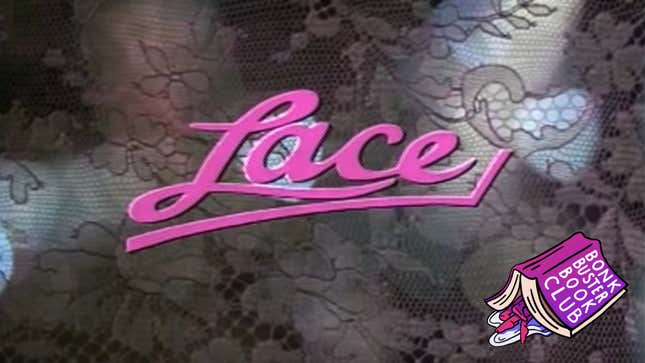Have You Ever Read Anything As Confidently Bonkers as Shirley Conran's Lace?
In Depth

Welcome to the first installment of the Bonkbuster Summer Book Club, which is a couple of days late because we had to make a quick, dramatic trip to Gstaad for plot device reasons. Please pull out your tattered paperback copies of Shirley Conran’s Lace, a book that is not merely high camp, but rather stratospheric camp. High church canonical camp. It is the Westminster Abbey stained glass windows of camp.
Which one of you bitches is my mother?!
Before Lace, Shirley Conran had already written a UK bestseller, 1975’s Superwoman, a book of advice for the home that positioned her as sort of a no-funny-business Martha Stewart for the women’s lib era. A Guardian interview described it as “the bestselling housework manual in which she told women life is too short to stuff a mushroom.”It was followed in rapid succession by Superwoman 2, Futurewoman: How to Survive Life After Thirty, and Superwoman in Action. She’d been married to a well-known designer and worked as editor of the London Observer fashion pages.
But it was nothing compared to her enormous success with Lace, which was published in 1982 and reads like a pop cultural bridge between the upheavals of the ’70s and the conservative, wealth-worshipping ’80s. The flap copy billed it thusly: “Lace takes the reader into the rarified world of five unforgettable women who are as beautiful, as complex and as strong as… lace.” It follows four girls—Maxine, Judy, Pagan, and Kate—from the world of girl’s boarding school in Gstaad to the heights of early ’80s career woman success. All the while they keep a secret: One of them got pregnant when they were teens and they banded together to handle it, none of them ever revealing that it happened and which girl it was.
The pump had already been primed by the success of Judith Krantz’s Scruples; her agent got a $750,000 advance for the manuscript, according to the New York Times. It was worth every penny; here are some sample lines: “He was the Nijinsky of cunnilingus.”
“Loneliness from time to time was the price of freedom, and freedom wasn’t a stars and stripes, Boy Scout idea, it was doing what you damn well wanted to do—all the time.”
And this masterpiece:
Urged by Robert, who wanted a row of little Roberts, she eventually consulted a doctor, not only to check that her fallopian tubes were unobstructed, but because after Robert made love to her, she felt a heavy turgid pain in her lower back, as if she were having a really nasty period. This sometimes lasted for hours, during which time Pagan would be tense and tearful, drop glasses, upset cups and ashtrays; she also started to suffer from insomnia. Not knowing that these were classic symptoms of a sexually aroused then frustrated female, Pagan would eventually get up at four in the morning and slug herself to sleep with a blissful half-pint glass of neat vodka.
Descriptions include:
“Vulnerability was bad for business. Judy preferred her reputation as an enfant terrible, a baby tycoon, the lethal little lady publisher who had already come a long way and intended to go much further. The image that Judy projected was that of a woman to be reckoned with—a woman who made you think ten percent faster when you were with her, but also a woman with a weakness for pretty shoes.”
-

-

-

-

-

-

-

-

-

-

-

-

-

-

-

-

-

-

-

-

-

-

-

-

-

-

-

-

-

-

-

-

-

-

-

-

-

-

-

-








































